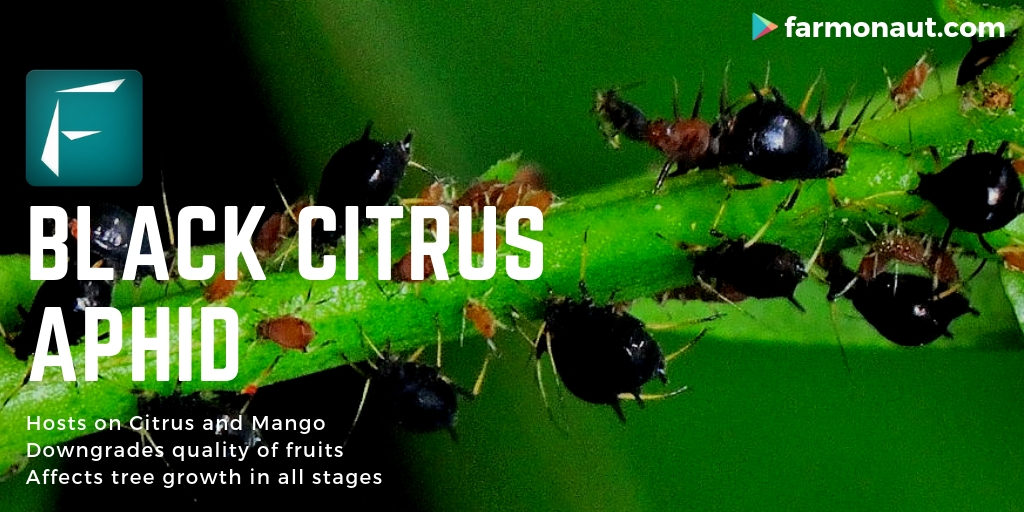Bacterial Biofertilizers: 5 Ways to Boost Plant Growth
Summary: Bacterial Biofertilizers in Agriculture — Enhancing Soil Fertility and Plant Growth
In our pursuit of sustainable agriculture practices, bacterial biofertilizers have emerged as a pivotal strategy to enrich soil, boost plant growth, and reduce reliance on chemical fertilizers. These biofertilizers utilize living microorganisms — particularly beneficial bacteria — to convert atmospheric nutrients into plant-accessible forms, suppress pathogens, promote robust crop development, and support natural soil fertility enhancement. In this comprehensive guide, we’ll explore the science, practical applications, and transformative impact of bacterial biofertilizers for plant growth, equipping you to make eco-friendly, productive decisions for your field or farm.
Introduction: Understanding Bacterial Biofertilizers
As the global demand for food intensifies and concerns about environmental degradation mount, it’s become increasingly important for us, as stewards of agriculture, to seek innovative solutions that balance productivity with sustainability. Among these, bacterial biofertilizers have risen to prominence by offering a natural, robust, and eco-friendly alternative to synthetic fertilizers. Centered around the use of living microorganisms, bacterial biofertilizers work by enhancing the nutrient cycle in soil, making critical elements like nitrogen and phosphorus more readily available to crops. This not only supports vigorous plant growth but also builds long-term soil health, contributing remarkably to sustainable agriculture practices worldwide.
Let’s delve into how these remarkable substances contribute to a greener, more productive future.
Types of Bacterial Biofertilizers: From Nitrogen Fixers to Biocontrol Agents
The natural diversity of bacteria found in soil ecosystems underpins the effectiveness of bacterial biofertilizers. These microorganisms utilize various mechanisms to promote plant growth and soil fertility enhancement. Let’s discover the major bacterial types involved in biofertilizer action—and how each supports sustainable agriculture practices.
1. Nitrogen-Fixing Bacteria in Agriculture
- Rhizobium:
- Forms symbiotic relationships with leguminous crops (such as soybeans, peanuts, peas, chickpeas).
- Induces root nodule formation, where conversion of atmospheric nitrogen (N₂) to plant-usable ammonia occurs.
- Crucial for improving nitrogen content in soil naturally.
- More on Rhizobium Symbiosis
- Azotobacter:
- Free-living, non-symbiotic bacterium found in the rhizosphere soil.
- Capable of fixing atmospheric nitrogen in a wide variety of crops—maize, wheat, cotton, and vegetables.
- Enhances microbial biodiversity and soil health.
- More on Azotobacter
- Azospirillum:
- Associates with roots of cereals and grasses, such as maize, sorghum, and sugarcane.
- Stimulates root development, enhances nutrient and water uptake, and fixes nitrogen.
- Particularly beneficial in tropical and subtropical agricultural systems.
- Azospirillum Applications
2. Phosphate Solubilizing Bacteria (PSB)
-
Bacillus amyloliquefaciens:
- Solubilizes insoluble phosphates into plant-available forms.
- Produces antibiotics and organic acids which suppress certain soil-borne pathogens.
- Enhances both phosphorus nutrition and plant protection.
- Bacillus amyloliquefaciens Details
-
Bacillus subtilis:
- Decomposes organic matter, solubilizes phosphates, and fosters overall soil fertility.
- Frequently included in PSB formulations for diverse crops.
- Bacillus subtilis Research
3. Plant Growth Promoting Rhizobacteria (PGPR)
-
Paenibacillus polymyxa:
- Fixes nitrogen, produces growth hormones, suppresses harmful soil-borne pathogens.
- Improves plant vigor, yield, and resistance to stress.
- Learn about Paenibacillus polymyxa
-
Bacillus amyloliquefaciens (again):
- Functions as both a PSB and a PGPR due to its multi-mechanistic properties.
- Induces systemic resistance and suppresses a range of plant diseases.
- Bacillus in PGPR Role
Mechanisms of Bacterial Biofertilizers: Five Ways to Boost Plant Growth
Now that we’ve learned about the types of bacterial biofertilizers, let’s examine the five foundational mechanisms by which these living microorganisms promote plant growth, enhance soil fertility, and enable sustainable agriculture.
-
Nitrogen Fixation
- Bacteria such as Rhizobium, Azotobacter, and Azospirillum convert inert atmospheric nitrogen (N₂) into ammonia (NH₃).
- Ammonia is a plant-accessible form and a primary nutrient essential for vegetative growth, protein synthesis, and chlorophyll production.
- Nitrogen fixing bacteria in agriculture are fundamental for crops with high nitrogen needs, especially legumes.
-
Phosphate Solubilization
- Bacillus amyloliquefaciens, Bacillus subtilis, and other PSB secrete organic acids.
- These acids convert insoluble soil phosphates into soluble, plant-available forms, promoting robust root system development and flowering.
- Especially critical in phosphorus-deficient and calcareous soils.
-
Production of Plant Growth Regulators & Hormones
- PGPR synthesize bioactive hormones such as indole acetic acid (IAA), gibberellins, and cytokinins.
- These regulators stimulate root elongation, cell division, and adapt plant growth to environmental conditions.
- Leads to improved nutrient (nutrient uptake), drought resistance, and higher yields.
-
Biocontrol of Plant Pathogens
- Certain bacteria (Bacillus amyloliquefaciens, Paenibacillus polymyxa) produce antibiotics, enzymes, and siderophores.
- Suppress soil-borne pathogens including fungi and bacteria, reducing disease incidence.
- Reduces reliance on chemical pesticides and supports plant health.
-
Enhancement of Soil Structure and Organic Matter Decomposition
- Some bacteria aid in decomposing organic matter, releasing secondary nutrients, and enhancing soil organic carbon.
- This improves water retention, aeration, and the microbial activity essential for fertile, productive soil.
- Foundation for maintaining long-term soil fertility enhancement.
Comparative Benefit Table: Five Major Mechanisms of Bacterial Biofertilizers
| Biofertilizer Mechanism | Description | Estimated Increase in Plant Growth (%) | Impact on Soil Fertility | Environmental Benefit |
|---|---|---|---|---|
| Nitrogen Fixation | Conversion of atmospheric N₂ into plant-usable ammonia by bacteria like Rhizobium and Azotobacter. | 15%–30% | Increases available nitrogen, supports protein & chlorophyll production. | Reduces need for synthetic nitrogen fertilizers; lowers pollution. |
| Phosphate Solubilization | Conversion of insoluble soil phosphates into plant-soluble forms by Bacillus spp. & PSB. | 10%–15% | Enhances phosphorus bioavailability; vital for root growth. | Minimizes phosphorus runoff, improves sustainability score. |
| Production of Plant Growth Hormones | Synthesis of auxins, gibberellins, cytokinins by PGPR. | 10%–20% | Promotes growth, nutrient uptake, and stress adaptation. | Supports natural growth, reduces external hormone application. |
| Biocontrol of Pathogens | Suppression of soil-borne plant diseases by antibiotic-producing bacteria. | 10%–25% | Reduces root and shoot diseases, supports resilience. | Lowers pesticide use, supports biodiversity. |
| Enhancement of Soil Structure | Decomposition of organic matter, formation of aggregates, improved soil porosity. | 10%–15% | Builds long-term fertility, water retention. | Promotes soil carbon sequestration, ecosystem health. |
Application of Biofertilizers in Crops: Maximizing Plant Benefits
To unlock the benefits of biofertilizers for plant growth and sustainable agriculture, it’s essential that we use the right application methods, tailored to our crops and soil types. Here are practical approaches:
- Seed Treatment: Coating seeds with bacterial biofertilizers before planting ensures early root colonization and robust seedling development. Common for legumes and cereals.
- Soil Application: Dispersing biofertilizer substances across the field or into planting holes introduces beneficial bacteria directly into the root zone. Critical for vegetable and tuber crops.
- Foliar Sprays: Spraying living bacterial suspensions onto plant leaves can supplement nutrient uptake and deliver biocontrol properties.
- Integration with Farm Management Tools: Using precision agriculture tools, such as Farmonaut’s Crop Plantation & Forest Advisory App, allows us to monitor field health and time our biofertilizer applications optimally for maximum effectiveness.
Dosage and timing are crucial; biofertilizers must be applied at recommended concentrations, ideally coinciding with critical crop growth stages.
- Compatible Strains: Select bacterial strains documented to be effective for your target crop and climate. For example, Rhizobium for soybean cultivation or Bacillus amyloliquefaciens for vegetable fields.
- Environmental Conditions: Moisture, soil pH, and organic matter content impact bacteria survival and activity. Healthy, balanced soils lead to greater biofertilizer establishment and persistence.
Benefits of Bacterial Biofertilizers for Plant Growth and Soil Fertility Enhancement
Integrating bacterial biofertilizers into agriculture unlocks a cascade of interconnected environmental and economic rewards for farmers and the planet. Here are the most notable sustainable agriculture benefits:
- Reduces Chemical Fertilizer Dependency: By naturally supplying essential nutrients, biofertilizers significantly decrease the need for synthetic fertilizers and associated environmental pollution.
- Enhances Crop Yields and Quality: Improved nutrient uptake, hormone production, and stress resistance directly translate to higher overall crop yields and superior produce quality.
- Promotes Soil Health & Biodiversity: Living bacteria foster diverse soil microbe populations, stimulate organic matter decomposition, and build long-term fertility for future cropping cycles.
- Biocontrol of Plant Pathogens: The ability to produce antibiotics suppresses harmful root and leaf diseases, reducing the necessity for chemical pesticides and ensuring crop resilience.
- Cost-Efficiency & Sustainability: Lower input costs, fewer environmental liabilities, and alignment with governmental sustainability programs all benefit farmers adopting biofertilizers.
- Carbon Footprint Reduction: With less reliance on fossil fuel-based agrochemicals and improved carbon sequestration in soils, biofertilizer use can dramatically lower the ecological footprint of farming. Use Farmonaut Carbon Footprinting Tools to track and optimize sustainability impact.
- Traceability and Resource Management: By integrating with traceability and fleet management solutions like Farmonaut Product Traceability and Farmonaut Fleet Management, farmers can certify sustainable practices, enhance transparency, and optimize field operations.
Farmonaut: Technology for Sustainable Agriculture Practices
Modern digital agriculture platforms enable us to maximize the benefits of bacterial biofertilizers in real-world conditions. Farmonaut is a pioneering force, democratizing access to precision agriculture and real-time farm management via an intuitive mobile app, web browser platform, and open API.
- Satellite-Based Monitoring: Get actionable insights into crop health, measure soil moisture, and detect nutrient deficiencies to support timely and informed biofertilizer applications.
- Jeevn AI Advisory System: Receive crop-and-field-specific management advice, optimizing fertilizer, irrigation, and pest management schedules for sustainable yields (Learn more).
- Blockchain-Based Traceability: Enhance transparency for buyers and consumers by certifying sustainable cultivation and biofertilizer use via Farmonaut Traceability Solutions. This is especially useful for export markets and organic certification.
- Fleet and Resource Management: Track and deploy agribusiness machinery efficiently, reducing unnecessary resource consumption (See Fleet Management Benefits).
- API for Integration: Agritech businesses, researchers, and FINTECH services can directly access Farmonaut’s satellite and weather data via secure API. See API Developer Docs for integration guidance.
- Crop Loan and Insurance Verification: Banks and insurers can use Farmonaut’s Crop Loan and Insurance Services to enable trusted, data-backed lending for farmers adopting sustainable inputs.
Best Practices: Integrating Biofertilizers for Soil Fertility Enhancement
- Rotation and Diversity: Alternate crops with legumes and non-legumes; use mixtures of nitrogen fixing and phosphate solubilizing bacteria to ensure consistent nutrient supply and biocontrol.
- Combine with Organic Matter: Application of compost or green manure alongside bacterial biofertilizers boosts microbial establishment and activity.
- Monitor and Adjust: Use tools like Farmonaut’s Agro-Admin App to monitor soil quality, detect early disease, and optimize input schedules for biofertilizers.
- Store Cool and Dry: Live bacterial biofertilizer products should be stored as directed and used before expiration for maximum viability and efficacy.
- Farmer Education: Stay updated with the latest research and recommendations from agricultural experts, university extension services, and digital advisory platforms.
Farmonaut Subscription Packages for Precision Agriculture
To make informed, sustainable decisions and get the most from bacterial biofertilizers and other modern tools, try Farmonaut’s flexible subscription options—available for individual fields, agribusinesses, and large-scale farms.
Challenges and Future Prospects of Bacterial Biofertilizers in Agriculture
Overcoming Barriers to Adoption
- Environmental Sensitivity: Survival of bacterial strains is influenced by soil temperature, pH, organic content, and moisture. Poor field conditions can limit efficacy.
- Quality Assurance: Uniform quality and viability across biofertilizer products is necessary for predictable plant response. Adherence to storage, transport, and certification standards is advised.
- Farmer Awareness & Education: Many farmers are still unfamiliar with biofertilizer use, mechanisms, and practical application. Ongoing outreach and demonstration are essential.
- Initial Yield Expectations: Compared to chemical fertilizers, biofertilizers are sometimes slower to show response, and results may vary seasonally or by region.
Emerging Research & Innovations
- Strain Improvement: Advances in genetics and microbiology are producing bacterial strains with greater stress tolerance, plant growth promoting properties, and broader host compatibility.
- Smart Formulations: Encapsulated or blended forms of live bacteria are being developed to increase shelf life and survivability in the field.
- Integration with Digital Agriculture: Real-time field monitoring (using platforms like Farmonaut) supports data-driven biofertilizer decisions and improved efficacy.
- Expanded Field Trials: More scientific and farmer-led field research will validate the region- and crop-specific benefits of bacterial biofertilizers.
The future of sustainable agriculture depends on our ability to harmonize advanced technology and natural microbial solutions. By continuing to invest in research, education, and field innovation, we can unlock the full potential of bacterial biofertilizers for global food security and environmental stewardship.
Frequently Asked Questions (FAQ): Bacterial Biofertilizers
1. What are bacterial biofertilizers?
Bacterial biofertilizers are substances containing beneficial, living bacteria which, when introduced into seeds, soils, or plant roots, enhance plant growth and soil fertility by naturally increasing the supply of essential nutrients through mechanisms like nitrogen fixation, phosphate solubilization, and pathogen suppression.
2. How do bacterial biofertilizers differ from chemical fertilizers?
While chemical fertilizers provide nutrients in synthetic forms, bacterial biofertilizers rely on microorganisms to convert environmental or soil nutrients into bioavailable forms for plants, resulting in reduced pollution and improved long-term soil health.
3. Can biofertilizers control plant diseases?
Yes, certain strains of bacteria, such as Bacillus amyloliquefaciens and Paenibacillus polymyxa, possess biocontrol properties. They produce antibiotics and enzymes that suppress soil-borne pathogens and minimize disease incidence in crops.
4. What are the main application methods?
Bacterial biofertilizers can be applied through seed treatment, soil incorporation, and foliar sprays. The choice depends on the crop, target benefit, and local farming practices.
5. Are biofertilizers suitable for all crops?
Most crops can benefit from some form of bacterial biofertilizer, though compatibility and effect depend on species and strain. Legumes benefit most from rhizobial inoculation, while cereals, vegetables, and tubers respond well to PSB and PGPR.
6. How do I know which biofertilizer to use?
Choice depends on your crop, soil test results, and local climate. Agricultural extension agents, agronomists, and digital platforms like Farmonaut can provide region-specific recommendations.
7. Are there risks or side effects?
Bacterial biofertilizers are generally safe, non-toxic, and eco-friendly. Standard precautions for live microbial products apply: proper application rates, storage, and use before the expiration date.
Conclusion: Embracing Bacterial Biofertilizers for Sustainable Growth
Bacterial biofertilizers are at the heart of a new agricultural revolution—one where we promote productivity while achieving true environmental responsibility. By harnessing the power of beneficial bacteria, we enhance plant nutrient uptake, suppress disease, boost yields, and restore the natural fertility of our soils. Supported by tools like Farmonaut for precision monitoring, resource optimization, and traceability, there’s never been a better time for farmers and agribusinesses globally to adopt natural, data-driven, and sustainable solutions.
As we continue to integrate cutting-edge digital management with centuries-old wisdom about nature’s microbial allies, agricultural landscapes everywhere can thrive for generations to come—naturally, affordably, and sustainably.













